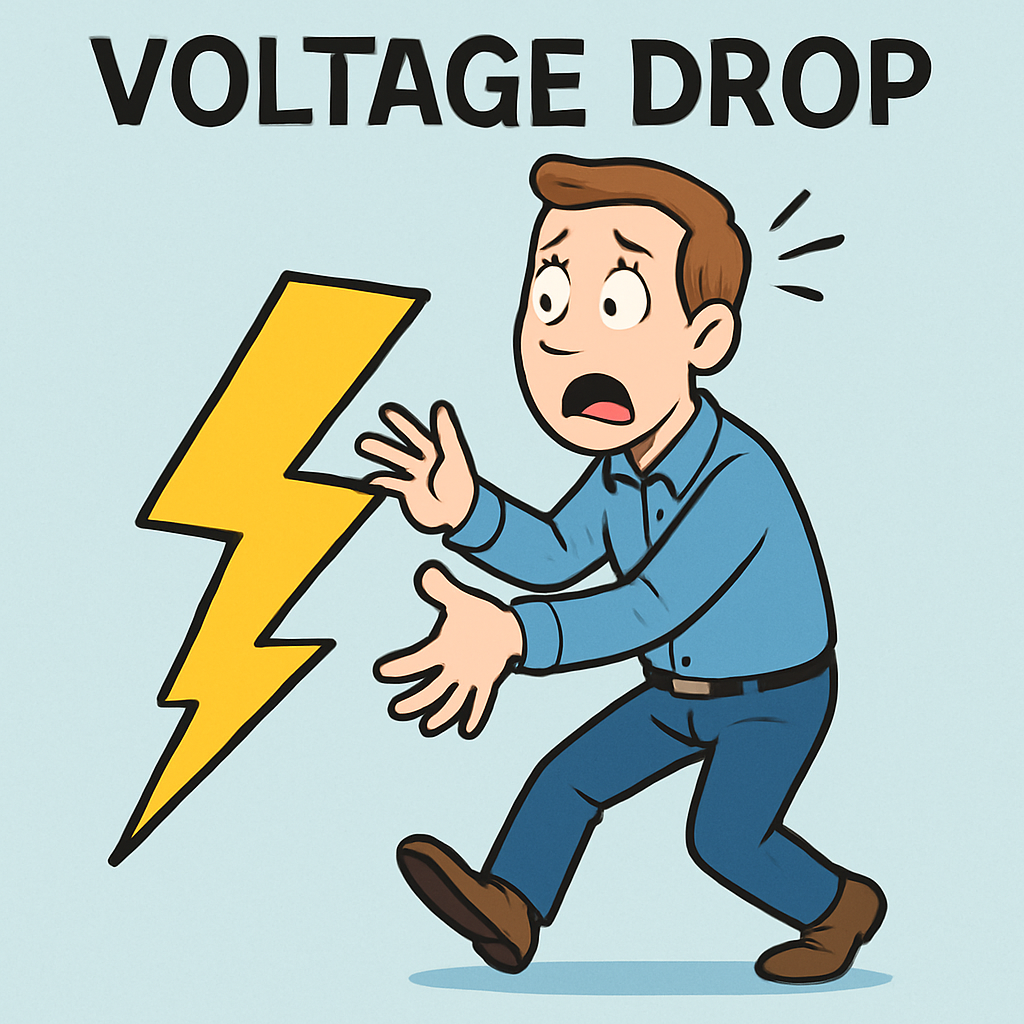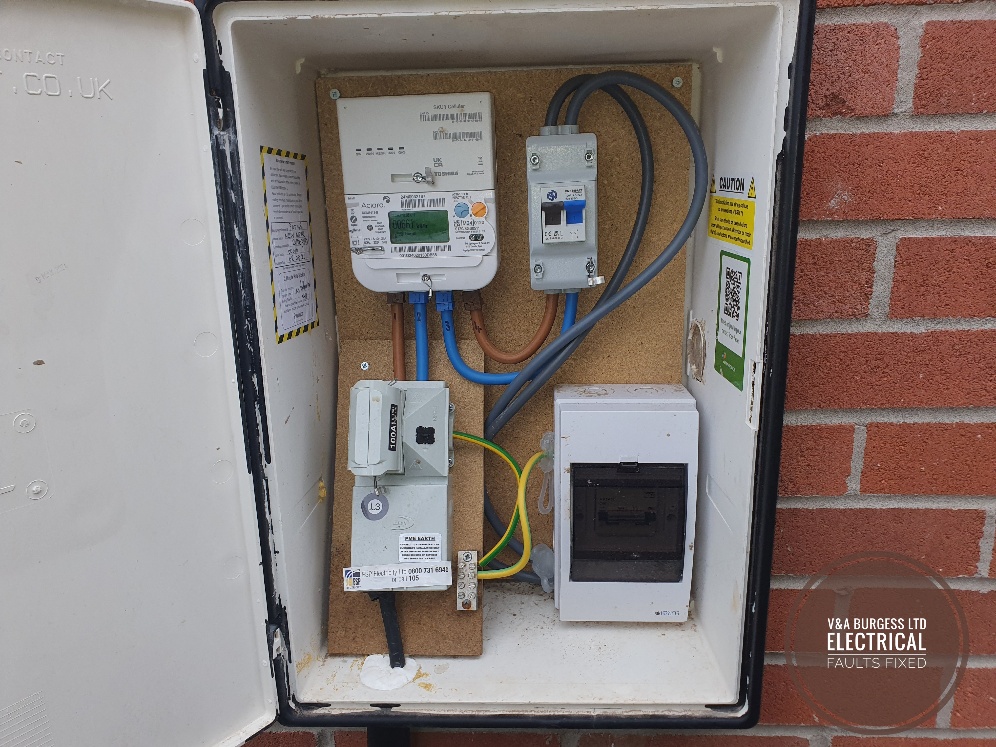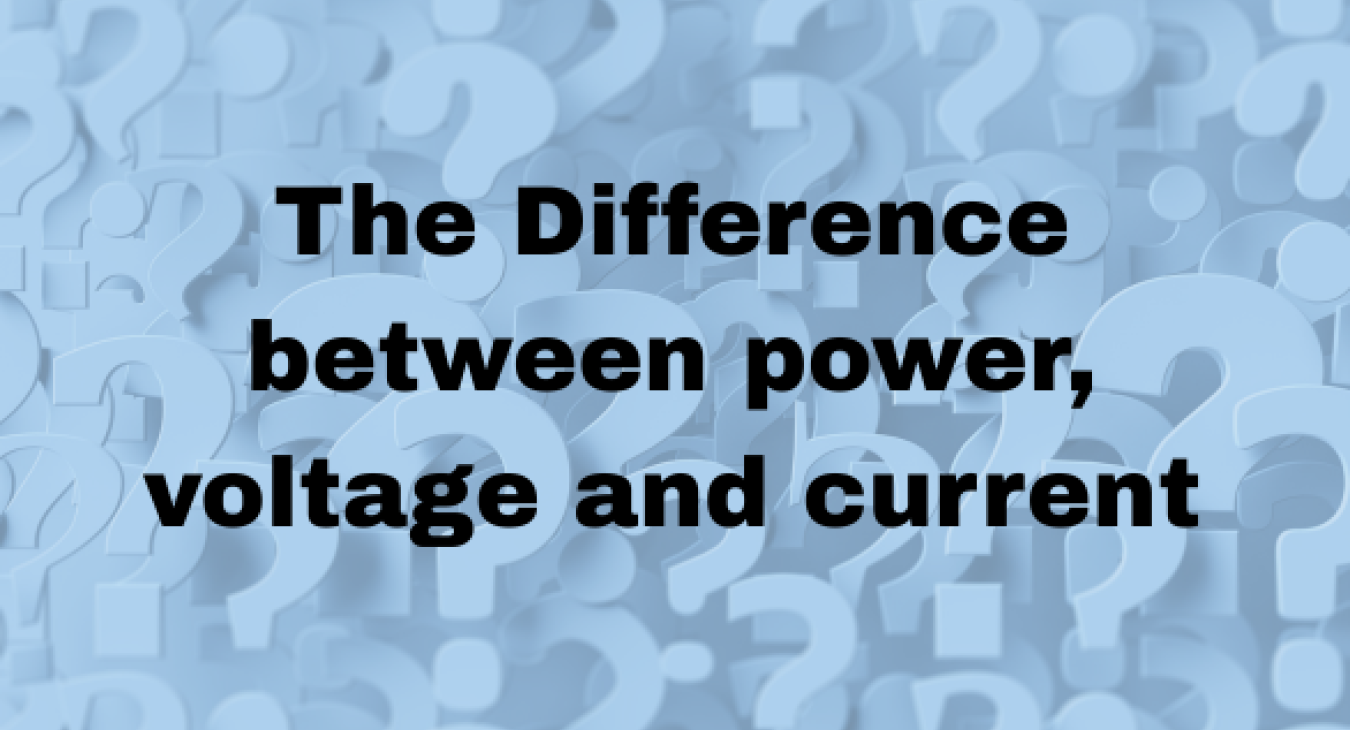Table of Contents
- What exactly is Voltage?
- What is Voltage drop?
- How can volt drop be seen?
- How much power can our homes have?
- Does higher Power mean higher Voltage?
- What is Power a measurement of?
- How is total power used calculated?
- What can 1 kWh do?
- What uses the most Electrical Power in our homes?
- Does Electric Current Increase when Power Increases?
- What increases when there is a short circuit?
- Summary
Voltage is essentially the electrical force that pushes current through a circuit. Current is the flow of electric charge through a circuit, the magnitude of which depends on the voltage pushing and the resistance impeding. Power (Watts) is the rate of electrical energy (Joules) transferred per unit of time (Seconds) in an electrical circuit. Power is calculated by multiplying the Voltage in Volts and the Current in Amps.
Back to top1) What exactly is Voltage?
Voltage is the potential difference between two points forming a circuit. Where there is a difference in voltage, current flow can occur. The magnitude of that electric current will depend on whatever is getting in the way (resistance or impedance).

2) What is Voltage drop?
Where a high powered electrical load (such as an electric shower or car charging equipment) is present in an electrical circuit, cables can experience voltage drop due to resistance. This can be seen in Ohm's Law and can cause problems for electrical circuits. There is a combination of factors that will determine how much voltage drop occurs in a circuit including:
- Capability of the cable to dissipate heat
- Length of the cable
- The design current of the circuit (connected electrical loads)
- Copper wire Vs Aluminium wire
3) How can volt drop be seen?
One of the best indicators of voltage drop in an electrical circuit is dimming or flickering lights. If you have ever started a vehicle whilst the headlights are on you will have likely witnessed the dimming of the headlights as the huge electrical current is drawn to the starter motor as it cranks the engine! The same can be seen in our homes, where a high demand appliance is switched on, the lights may dim momentarily.
Back to top4) How much power can our homes have?
In the United Kingdom in a typical household, the maximum available fuse size for the incoming supply is around 100 Amps. Our voltage is typically 230 Volts which (by ohms law) gives us 23'000 Watts or 23 kilo Watts (kW) of power. This is more than sufficient for all but the largest of homes!

(Photo: Incoming Mains Supply Equipment)
Back to top5) Does higher Power mean higher Voltage?
Not necessarily. We have to consider Ohms Law again which relies on BOTH Voltage and Current to arrive at a power Figure.
If we had a 230 Volt supply and two different electrical loads with electrical resistance of 20 Ohms and 10 Ohms for example, there would be 5.29kW of power dissipated within the 10 Ohm load and only 2.64kW of power dissipated in the 20 Ohm load.
We could decrease the voltage to 120 volts (as is the case in the USA and Canada) and without decreasing the resistance of the loads, there would be less power dissipated!
We could easily achieve the same power though so long as we reduced the resistances of the loads to 2.72 Ohms (to achieve 5.29kW) and 5.45 Ohms (to achieve 2.64 kW).
For a load of fixed given resistance however, an increase in voltage will mean an increase in power dissipated. Higher Resistance without a corresponding increase in voltage will mean less power is dissipated overall.
Back to top6) What is Power a measurement of?
Power is a measurement of the rate of work done similarly, the rate of energy transfer in an electrical circuit.
Back to top7) How is total power used calculated?
The amount of power that an appliance is likely to use is calculated by multiplying the power of the appliance in kW (kilowatts) by the time it has been used for (in hours) to give a kWh figure. Electricity bills are calculated by the amount of kWh that have been consumed at an electrical installation.
Back to top8) What can 1 kWh do?
There are a huge number of things that 1kWh can do for us in our homes and businesses. Let’s have a look at some examples of appliances in terms of their power ratings to see the amount of work that 1kWh actually means.
- An Electric Shower (8500 watts) can be used for 7 Minutes.
- An Immersion Heater (3000 watts) can be used for 20 Minutes.
- A 4 slice toaster (2000 watts) can be used for 30 Minutes.
- A fridge freezer (200-400 watts) can be used for around 3 Hours.
- A Television (100 watts) can be used for around 10 hours.
- A Laptop Computer (20-40 watts) can be used for about 1 -2 days.
- An incandescent bulb ( 60-w bulb ) can be used for around 16 hours.
- An LED light bulb (around 5 watts) can be used for 8 days.
As we can see, there is huge variation in what 1kWh can provide for us in our homes and businesses depending upon the type of electrical equipment or appliance that we are using.
Back to top9) What uses the most Electrical Power in our homes?
Typically, the most power hungry electrical appliances and equipment are anything that has a heating element along with vehicle charging equipment. We have written a separate article relating to this here. Think of electric showers, cookers, kettles, toasters and water heating equipment like dishwashers, washing machines and immersion elements (hot water tank heating).
Back to top10) Does Electric Current Increase when Power Increases?
Not necessarily. We have to consider the relationship between Voltage, Current and Power.
Power = Current x Voltage
Therefore, for Electric Power to increase, either the current would need to increase, the voltage would need to increase or BOTH current and voltage would need to increase. As there can be a voltage difference throughout the day in the electric supply to our homes, it is possible that more power is dissipated in appliances at certain times of day.
Back to top11) What increases when there is a short circuit?
When a short circuit occurs, we have a situation where there is no electrical load between the line conductor and neutral conductor of the circuit. As a result, we have virtually eliminated resistance leading to a very high electrical current being able to flow. By Ohms's law, the lower the resistance that is present whilst voltage remains constant, the higher the electrical current is able to flow.

Current = Voltage / Resistance
Back to top12) Summary
The relationship between power, voltage and current are some of the basics of electricity and where one element increases or decreases there is always a knock-on effect on others. There are key differences between resistance, power, voltage and current but all are needed in various magnitudes in order to make electrical circuits function safely and correctly.
Back to top
Read more articles
- Log in to post comments


